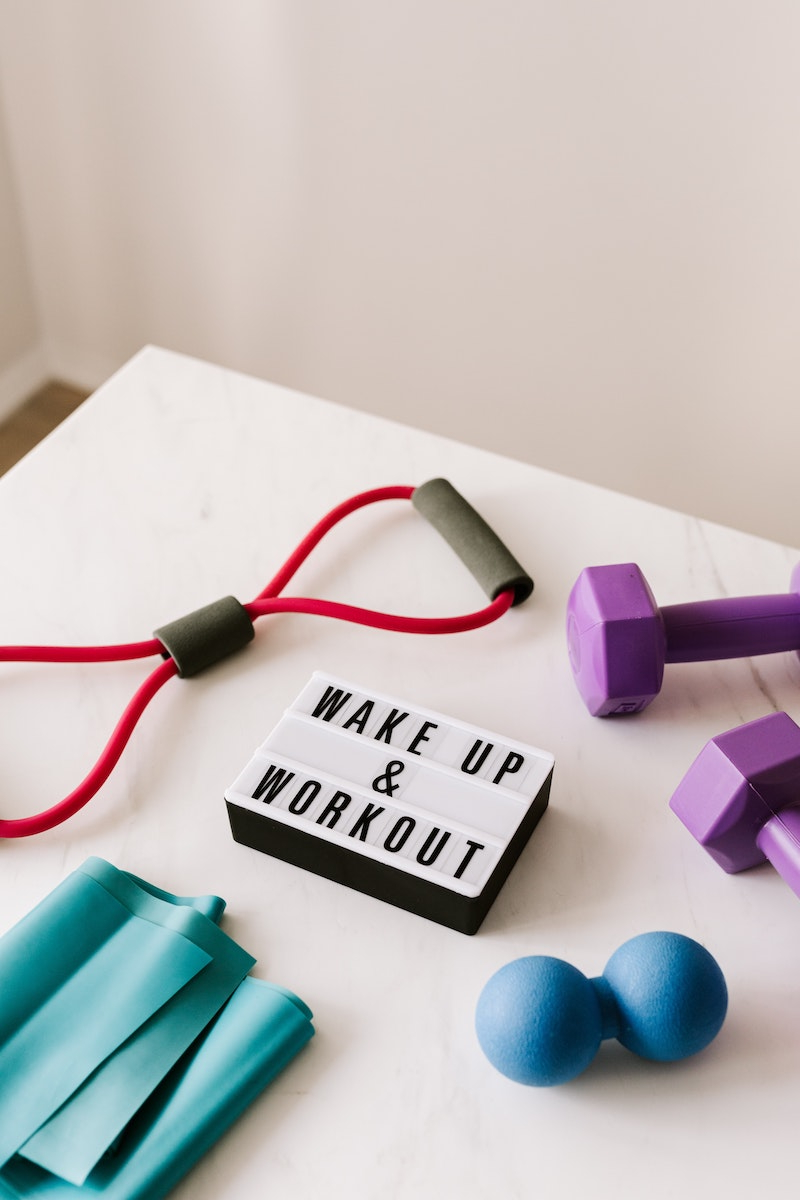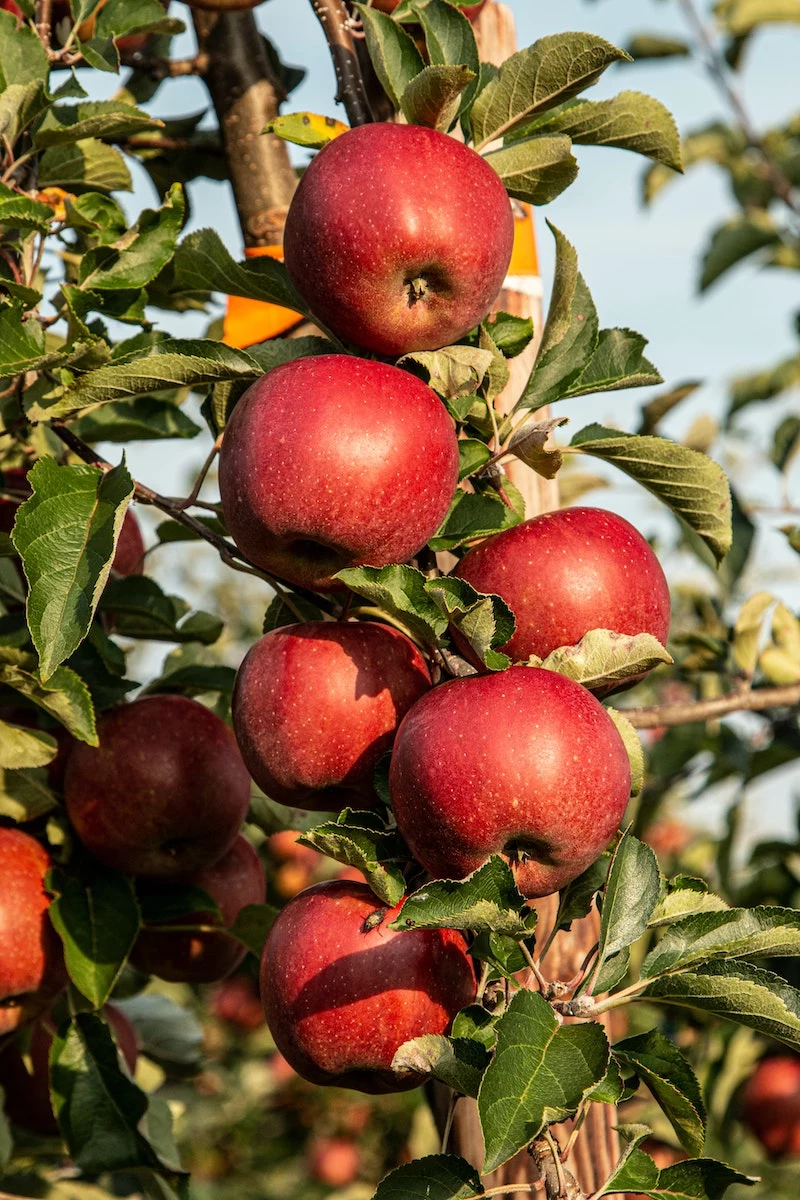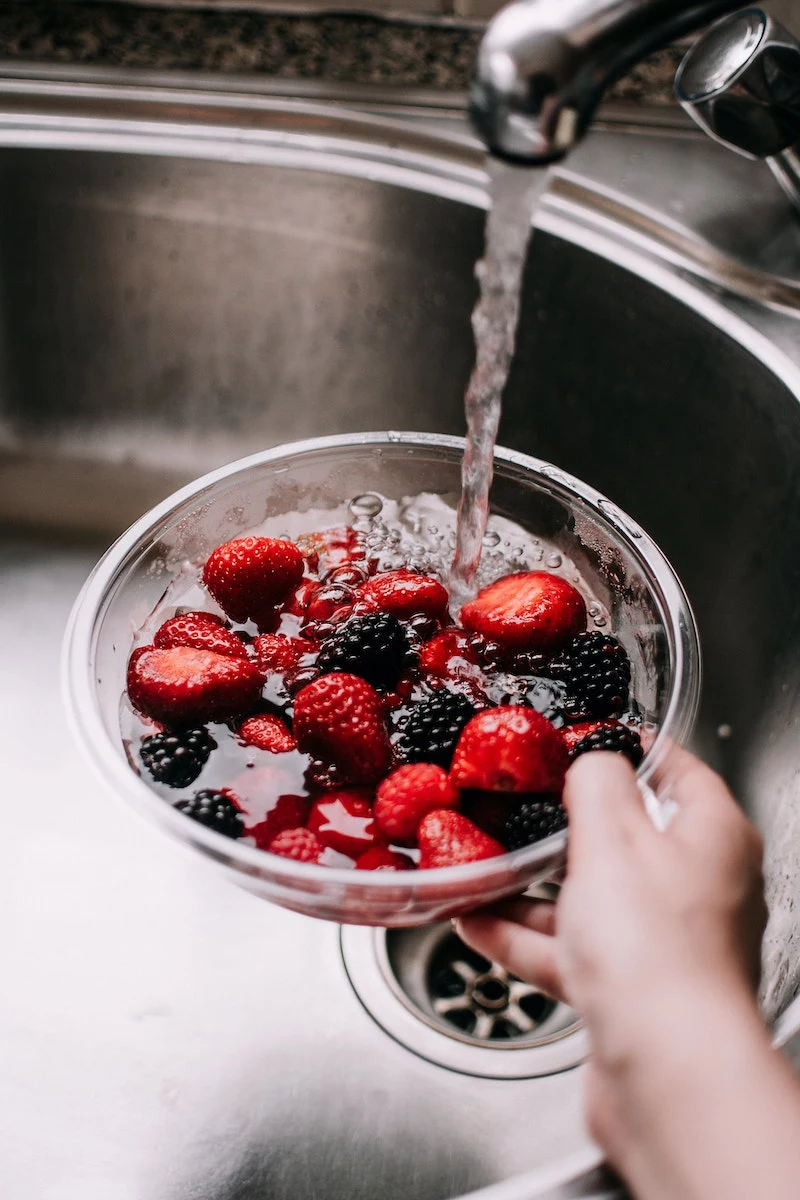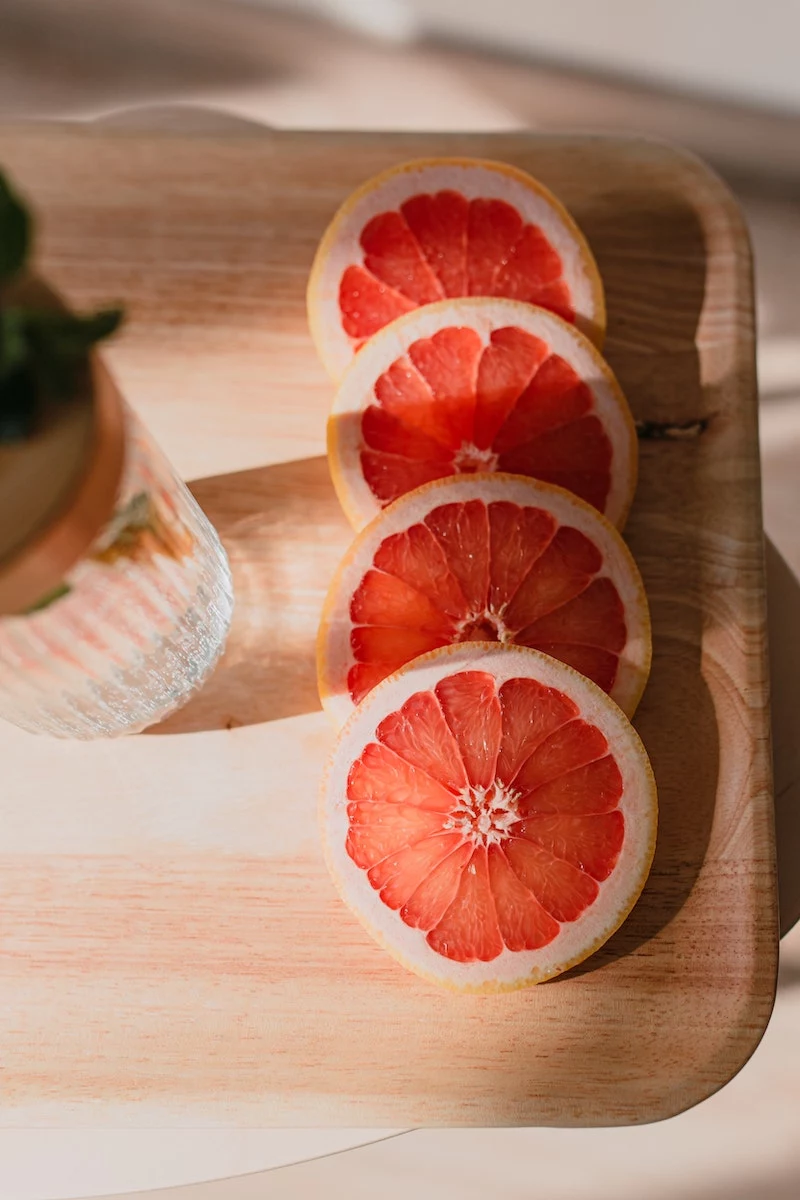Think Fruit is Sabotaging Your Weight Loss? Think Again.
I’ve been in the health and wellness space for a long, long time, and if there’s one thing that never changes, it’s the confusion around fruit. I’ve had so many people tell me they’re scared to eat a banana because they heard it’s “just sugar.” It’s one of those persistent myths that just won’t quit.
In this article
So let’s clear this up right now: whole fruits are one of the best tools you have for managing a healthy weight. They aren’t some magic pill, but when you know how to use them, they are game-changers. This isn’t about chasing fad diets; it’s about understanding how food really works in your body.
Feeling a bit overwhelmed with all the info out there? I get it. Here’s your first step, and it’s super simple.
Try This Today: The next time you have breakfast, just add half a cup of frozen berries to whatever you’re eating—yogurt, oatmeal, or even a protein shake. That’s it. See? You’re already doing it.

The ‘Why’ Behind the Fruit Fix
Before we jump into which fruits to eat, let’s talk about why they work. Honestly, once you get these concepts, your relationship with food can shift from fear to confidence. It’s all about the mechanics.
Fiber: Your Stomach’s Best Friend
Fiber is the unsung hero here. Fruits are packed with it, and it works in two brilliant ways. First, you’ve got soluble fiber. Think of it as a sponge. It soaks up water in your stomach and forms a gel, which slows down digestion. This is why a whole apple keeps you full for hours, but apple juice… not so much. That feeling of fullness is called satiety, and it’s your secret weapon against mindless snacking.
Then there’s insoluble fiber. This type doesn’t dissolve; it just adds bulk and keeps your digestive system moving smoothly. A happy, regular gut is a cornerstone of good metabolic health.

The Volume Trick: Water Content and Calorie Density
This is such a simple yet powerful idea. Fruits are mostly water and fiber, meaning they take up a ton of space in your stomach for very few calories. For instance, a whole cup of strawberries is only about 50 calories. A single small cookie can easily match that, but which one do you think will actually fill you up? By choosing these low-calorie, high-volume foods, you can eat satisfying portions without going overboard on calories. It’s a strategy I teach everyone for managing hunger effectively.
Keeping Your Blood Sugar Chill
You’ve probably heard about the Glycemic Index (GI), which ranks how fast a food spikes your blood sugar. High-GI foods cause a rapid spike and then a nasty crash, which usually triggers cravings for more junk. It’s a vicious cycle.
Most whole fruits? They have a low-to-moderate GI. That amazing fiber we just talked about slows down the absorption of the fruit’s natural sugars. This means you get a slow, steady release of energy instead of a chaotic spike and crash. This is the key difference between eating a whole orange and chugging a glass of fiber-less orange juice.

Your Go-To Fruits: A Quick and Dirty Guide
Okay, let’s get practical. While almost any whole fruit is a good choice, some are true all-stars for weight management. Here’s a quick rundown of my favorites and when to use them.
- For All-Day Snacking: Apples are your workhorse. They’re cheap, crunchy, and satisfying. One medium apple has about 100 calories and over 4 grams of filling fiber.
- For Creaminess & Satiety: Avocado is the king. Yes, it’s a fruit! High in healthy fats that crush hunger. A quarter of an avocado is a perfect serving size.
- For a Sweet Tooth: Berries are your best bet. A whole cup is only about 80 calories but delivers up to 8 grams of fiber. They’re perfect for satisfying sugar cravings.
- For Pre-Meal Fullness: Grapefruit is a classic for a reason. High in water and low in calories (about 50 for half), it’s great for filling up before a bigger meal. (Heads up: Read the safety warning on this one below!)
- For Workout Fuel: Bananas are fantastic. A medium one has about 105 calories. Use a ripe one for quick energy before exercise or a greener one for more fiber-like benefits.

Apples: The Everyday Staple
The saying about an apple a day really holds up. They’re affordable, available everywhere, and incredibly effective. A quick tip: always eat the skin after a good wash! That’s where a lot of the fiber and nutrients are hiding. The satisfying crunch can also trick your brain when you’re craving something like potato chips.
Lesser-Known Trick: Make Healthy Apple Chips!
This is a game-changer. Thinly slice one apple (a mandoline slicer works wonders here, but a knife is fine). Sprinkle the slices with cinnamon and bake them on a parchment-lined sheet at a low temp, around 200°F (or 93°C), for about an hour on each side, or until they’re crisp. You get a huge bowl of crunchy snacks for about 100 calories.
Avocado: Don’t Fear the Fat
So many people are scared of avocado because of the fat and calories. Let’s reframe that. The fat in avocado is the heart-healthy monounsaturated kind, the same stuff found in olive oil. This type of fat is unbelievably satiating. Research has shown that adding just half an avocado to a meal can keep you feeling full for hours. Use it to replace less healthy fats—spread it on toast instead of butter or mix it into tuna salad instead of mayo. A typical Hass avocado costs around $1.50 to $2.50, and you only need a quarter or a half at a time.

Berries: The Antioxidant Powerhouses
Raspberries, blueberries, strawberries… I love them all. They give you a huge burst of sweetness for very few calories. And here’s a pro tip: frozen berries are your best friend. They’re picked at peak ripeness and flash-frozen, so they’re just as nutritious as fresh, but they’re cheaper and available all year. A big bag at Costco or a similar store can cost around $10-$14 and will last you for weeks. They are perfect for smoothies.
My No-Fail Smoothie Formula: To avoid a sugar bomb, stick to this. In a blender, combine 1 cup of frozen mixed berries, 1 scoop of your favorite protein powder, a big handful of spinach (I promise you won’t taste it), and enough water or unsweetened almond milk to get it moving. That’s a perfect, balanced mini-meal.
Grapefruit: The Potent Pick (With a Big Warning)
Grapefruit has a reputation in diet culture, and some of it is deserved. Eating half a grapefruit before a meal can help you feel full from its water and fiber, so you naturally eat less. If it’s too bitter, try broiling it with a sprinkle of cinnamon to caramelize the sugars.

CRITICAL SAFETY WARNING: I cannot overstate this. Grapefruit contains compounds that can dangerously interact with many common prescription medications, including some for high blood pressure, cholesterol (statins), and anxiety. It can cause the medication to build up to toxic levels in your body. If you take ANY prescription meds, you absolutely must talk to your doctor or pharmacist before adding grapefruit to your diet. Seriously. It’s not worth the risk.
Bananas: Use Their Ripeness to Your Advantage
The key to bananas is their ripeness. A slightly green, less-ripe banana is full of resistant starch, which acts more like a fiber and is great for your gut health. A fully ripe, yellow-spotted banana has more simple sugar, making it perfect for quick, easily digestible energy. I tell my active clients to have a ripe banana 30-60 minutes before a workout for fuel. For a regular snack, a greener banana paired with some nuts is a better bet for sustained energy.

Putting It All Together: Pro-Level Strategies
Once you’re comfortable with the basics, you can start fine-tuning your approach.
The Power of Pairing
I almost never recommend eating fruit alone as a snack. Pairing it with a protein and a healthy fat is a much smarter move. It slows sugar absorption even more, keeps you full for way longer, and gives you a more complete nutritional package. Think of it as building a ‘mini-meal’.
Some Winning Combos:
- Pear slices with a good-quality string cheese or a few cubes of sharp cheddar.
- A small bowl of berries with a small handful of walnuts or almonds.
- Kiwi (eat the skin, it’s fuzzy but good for you!) with a serving of plain Greek yogurt.
- Apple slices dipped in two tablespoons of hummus. (Don’t knock it ’til you try it!)
Snack Swap Example: See the Difference
Let’s make this tangible. Say at 3 PM you’re craving something. You could grab two medium-sized chocolate chip cookies.

- The Cookies: Roughly 180 calories, 1g fiber, 16g sugar. You’ll feel a quick rush, then a crash, and you’ll probably be hungry again in an hour.
Or, you could have this instead:
- The Smart Swap: One medium apple with one tablespoon of almond butter. Roughly 190 calories, 7g fiber, 21g sugar (mostly from the fruit). You’ll feel satisfied, energized, and full for hours, thanks to the fiber, protein, and healthy fats working together.
See? It’s not about the calories—it’s about what those calories are doing for your body.
Your Mission, Should You Choose to Accept It
The goal is always inclusion, not exclusion. Instead of obsessing over what to cut out, focus on what you can add in. A serving of fruit at breakfast or as a planned snack can easily push out a less healthy choice without you even noticing.
So here’s your challenge for this week: Swap just ONE of your usual processed snacks for a fruit and protein combo from the list above. Just one. Pay close attention to how you feel an hour or two later. I bet you’ll be surprised.
By the way, if you have a medical condition like diabetes or kidney issues, your needs are different. It’s super important to work with your doctor or a registered dietitian to create a plan that’s safe for you. But for most people, embracing fruit is one of the simplest, most effective steps toward a healthier weight and a better relationship with food.
Inspirational Gallery
Whole Apple: Roughly 95 calories, full of water and about 4.5 grams of satiating fiber.
A small bag (40g) of dried apple chips: Often over 150 calories, with concentrated sugar and most of the water removed, making them far less filling.
For a snack that truly supports your goals, the whole, fresh version is the undisputed champion.
The sugar in a whole fruit comes with its own antidote: fiber. The sugar in a cookie comes alone.
Ever wonder why an apple with a handful of almonds keeps you full so much longer than an apple by itself?
It’s the magic of metabolic balance. The protein and healthy fats in the almonds significantly slow down the digestion and absorption of the fruit’s natural sugars. This prevents a sharp blood sugar spike and the inevitable energy crash that sends you searching for your next snack. It’s a simple strategy to turn a light snack into sustained energy.
- Locked-in nutrients, frozen at the peak of ripeness.
- Available and affordable all year, regardless of the season.
- Zero prep work—just scoop and add to yogurt, oats, or a protein shake.
The secret is flash-freezing. This industrial technique freezes fruit so rapidly that the large, cell-damaging ice crystals don’t have time to form, preserving the fruit’s texture and nutritional value far better than home freezing.
According to data from the National Health and Nutrition Examination Survey, more than 90% of American adults don’t consume the recommended amount of dietary fiber.
This isn’t just a random health statistic; it’s a huge opportunity. Adding just one cup of raspberries (with 8 grams of fiber) and a medium pear (5.5 grams) to your day can get you more than halfway to the daily fiber goal, radically improving satiety and gut health with minimal effort.
Think beyond just one fruit at a time. Try ‘flavor stacking’ to boost satisfaction and nutrients. A sliced pear topped with a sprinkle of cinnamon not only tastes indulgent, but the spice can also help with blood sugar regulation. Add a few walnuts for a crunchy texture and a dose of omega-3s that signal fullness to your brain.
A crucial point for lasting success: Eat with your eyes first. A vibrant bowl filled with green kiwi, deep red pomegranate seeds, and bright orange slices is psychologically more satisfying than a monotonous, beige-colored snack bar. This visual feast can help curb cravings for processed sweets by signaling nourishment and abundance to your brain before you even take a bite.
When shopping, make your choices count. The right selections in the grocery aisle will set you up for success at home.
- Always prioritize whole fruits over juices or fruit cocktails, which are often stripped of fiber and loaded with added sugars.
- If buying canned fruit, check the label for “packed in water” or “in its own juice,” and avoid anything in heavy syrup.
- Don’t skip the frozen aisle. Brands like Wyman’s of Maine offer fantastic wild blueberries that are often higher in antioxidants than their fresh counterparts.
- Raspberries: Among the highest in fiber and lowest in sugar of all berries.
- Grapefruit: Its high water content and specific enzymes can support a healthy metabolism.
- Apples (with skin): The skin is a potent source of insoluble fiber and quercetin, a powerful antioxidant.










